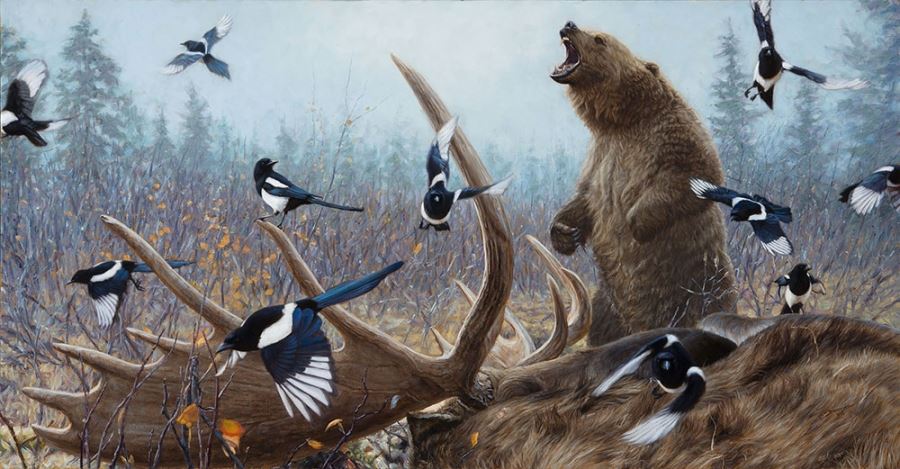

The availability of denning habitat― mediated by landscape features that facilitate the formation of snow drifts― appears to increase in the eastern portion of the Alaska coastal plain. Based on data collected from radio-tagged adult female bears, maternal denning now occurs at relatively high densities along the central and eastern Arctic coastal plain of Alaska. However, over the last three decades, as sea ice has become thinner and more prone to fragmentation, there has been a landward shift in the distribution of dens. Historically, most polar bears from the Southern Beaufort Sea population constructed maternity dens on the sea ice. Pregnant polar bears enter maternity dens in October or early November, give birth to cubs in December or early January, and exit dens in March or early April. This will give managers the best chance of adapting strategies to assure the long-term persistence of polar bears in a changing ice environment. If we know how polar bears respond to changes in ice quantity and quality, we will be able to predict how forecasted changes in the ice may affect future polar bear populations.

Research in this focal area seeks to develop a better understanding of how changes in the distribution and characteristics of sea ice habitat are likely to affect polar bear fitness, distribution, and interactions with people. This loss of stable old ice has catalyzed additional losses of sea ice cover each summer because the thinner younger ice is more easily melted during the recent warmer summers. In winter, there have been dramatic reductions in the amount of old ice, predominantly in the western Arctic. Over the past 25 years, the summer sea ice melt period has lengthened, and summer sea ice cover has declined by over half a million square miles. Polar bears are not aquatic, however, and their only access to the seals is from the surface of the sea ice. Polar bears almost exclusively eat seals, and they are equally as dependent upon the sea for their nutrition as are seals, whales, and other aquatic mammals. Most important of these is foraging, or access to food. Polar bears are tied to the sea ice for nearly all of their life cycle functions. Distribution and MovementsĪ polar bear walks across rubble ice in the Alaska portion of the southern Beaufort Sea. Additionally, this work will allow us to develop an understanding of how polar bear populations will respond to a variety of stressors modulated by climate change, including contaminant and pathogen exposures, changes in food web structure and prey accessibility, and changes in spatial distribution. Research in this focal area is centered on (i) collecting data on a variety of systems that help determine and mediate polar bear health and energetics, and (ii) developing monitoring and surveillance programs for detecting changes in population health over time. Because of this, measuring changes in health and energetics has potential for revealing important associations between environmental stressors and population dynamics.

An animal’s health and energetic state reflects the interaction between its behavioral choices and the environment. The warming climate has the potential to drive significant changes in the health and energetics of Arctic fauna, particularly those dependent on sea ice habitats like polar bears. Results of past studies have allowed us to assess the relationships between population vital rates and environmental change, which provides our partners with information needed to inform management decisions. We are currently developing an analytical approach that will allow us to integrate additional types of data (e.g., spatial data, non-invasively collected genetic data) into the modeling process to provide improved assessments of population status. To estimate both the population size and vital rates, we have used mark-recapture studies relying on physical capture of bears, primarily during the spring. In addition, the USGS collaborates with the US Fish and Wildlife Service in population studies in the Chukchi Sea. Information on the status and trends of polar bear populations are needed to inform management of polar bears under US laws and international agreements. The USGS maintains a long-term research program focused on the population dynamics of the southern Beaufort Sea polar bear population. (Public domain.) Population Dynamics Polar bear family at a whale bone pile near Kaktovik, Alaska.


 0 kommentar(er)
0 kommentar(er)
